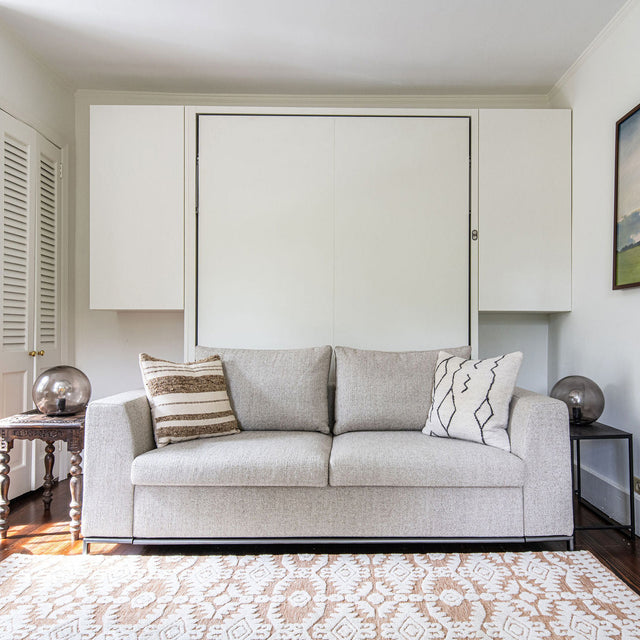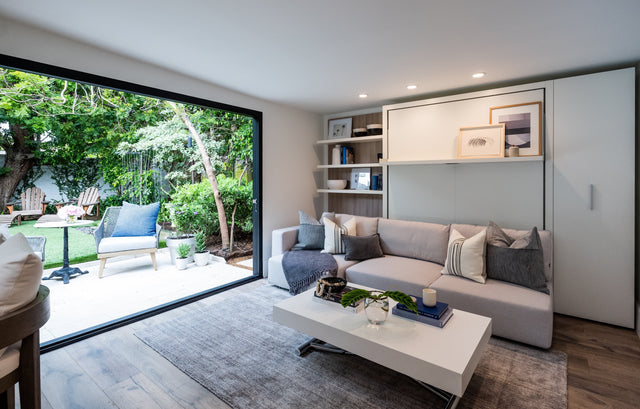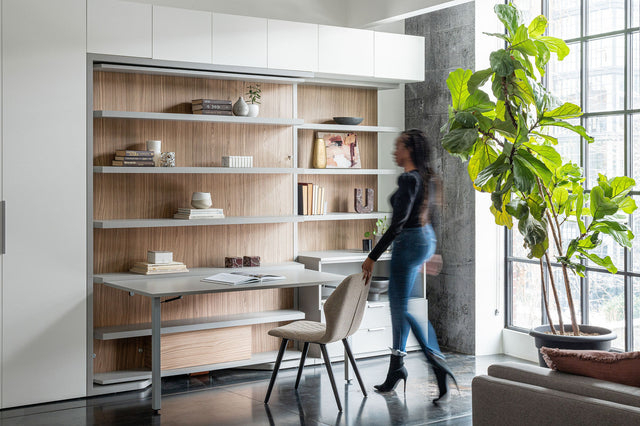The Death of the Dining Room

How often do you host dinner parties around your formal dining room table?
Chances are, not often. And we don’t just mean during the COVID-19 pandemic, either — a 2017 Angie’s List survey found that only 23 percent of Americans spent their evening meals gathered around a “proper dining table” in a specially designated, separate dining room.
This departure from dedicated dining rooms is a phenomenon that industry experts have been tracking for some time now. In 2012, a group of UCLA anthropologists discovered that American households virtually never use their formal dining rooms, except for holiday entertaining (Life at Home in the 21st Century: 32 Families Open Their Doors).
Clearly, our needs and lifestyles are changing; but our housing stock has been slow to keep up with the changing tides.
Why haven’t residential architects and developers parted with the dining room?
In 2019, the National Association of Home Builders (NAHB) found that 86 percent of recent and prospective home buyers preferred a combination kitchen/dining room area, or an open plan kitchen, instead of a separate dining room. So why do the majority of new constructions still include this underutilized feature?
The reason is partially historical. “In the early 20th century and prior, many homes had servants,” the UCLA Life at Home study explains. “The kitchen was their separate domain, while the family ate in the dining room.” But as servant duties were taken over by kitchen appliances, the kitchen became the social gathering place of the home. Thus was born the eat-in kitchen — and the dining room, relegated to barely more than a showpiece, died.
Nowadays, homeowners are finding creative ways to make something useful out of these scarcely used rooms. The 2017 Angie’s List survey found that nearly two-thirds of homeowners use their formal dining room table for other activities, including crafts, storage, and kids’ homework. Still, others have completely converted the space into a guest room, home office, media room, or even a home gym. As American households invariably need more and more space, the formal dining room has also been repurposed into multi-use “flex” spaces, like combination office/guest spaces.
Anecdotally speaking…
Anecdotally speaking…
…the Resource design team has seen dozens of these converted dining rooms over the years. That’s because transforming furniture — like wall beds and height-adjusting or expanding tables — let homeowners re-purpose their dining rooms for the majority of the year, and still entertain family and friends during the holidays.
During the COVID-19 pandemic, especially, we’ve seen a notable increase in demand for multi-purpose flex spaces — and the dedicated dining room is often the prime candidate for a remodel. At a time when people are staying indoors more than ever before, who can really afford to let all that space go to waste?
Here are some clever ways homeowners have converted their dedicated dining areas with the help of transforming and multi-purpose furniture:
1. The All-In-One Room
A family of four was thriving in their 3-bedroom, 2-bathroom home in an Upper West Side prewar building. There was just one problem — their 12” x 11” dedicated dining room was not serving their needs at all. Dark, cramped, and packed to capacity with an oversized table, the dedicated dining room spent the majority of the year gathering dust, waiting for the handful of special occasions when it would finally seat guests.
That’s where interior designer Liz Conn, owner of Elizabeth Conn Design, stepped in. Her task: transform this one, underutilized room into four. The family needed the space to function as a guest suite for extended family; a home office for kids’ homework, bill paying, and catch-ups with colleagues; a lounge area for kids to entertain friends; and, as originally conceived, a dining room that could accommodate up to 10 guests for holiday dinners and parties.
Specifying a Swing sofa wall bed with surrounding modular shelving; a Home Office fold-away workstation; and a Goliath transforming console-to-dining table, Conn was able to cross off every item on her client’s wishlist. Now, with just a few easy motions, this room instantly transforms to meet any demand. What was once a completely static, barely used room is now the most active space in the home, her clients report.

2. 600 Sq. Ft. Family
As their family grew, Alison and Trevor had to find clever ways to make room in their 600-square-foot, one-bedroom Vancouver apartment. Though small, they loved their apartment — with its high ceilings, tall windows, and proximity to a vibrant neighborhood — and they were loath to leave when their kids were born. Rather than upsize, they adapted their existing space to work for their needs. They gave kids Theo (5) and Mae (3) the apartment’s lone bedroom, outfitting their room with a Kali Duo bunk wall bed system. The couple re-purposed the area off the kitchen — what might conventionally serve as a dining space — into their bedroom with the Penelope 2 queen-sized wall bed from Resource.
Alison and Trevor still host guests around their extending dining table, which floats in what is now their combination kitchen/dining area.
“As an advocate for small city living, I don’t think sacrificing entertaining in your own space is acceptable,” Alison says on her blog, 600sqftandababy, where she shares the details of her small-footprint, sustainable lifestyle. “We’ve had up to 8 adults over at a time… The luxury of our wall bunk beds means we can fold them away, creating a full playroom for the kids [while we entertain].”
Room enough for a family of four and their occasional guests — all without a separate dining room, and all in only 600 square feet.
3. Multi-Use Micro Unit
At only 350 square feet, Graham Hill’s LifeEdited 2 apartment in SoHo doesn’t technically have a formal, separate dining room; but thanks to a flexible floor plan and a host of multi-functional furniture, Graham converted the apartment’s living area into a multi-purpose flex space for living, sleeping, and eating.
Graham loves his transforming Passo table from Resource Furniture, which converts from a coffee table to a 7-foot-long dining table capable of seating 10 for dinner (more than many single-family homes can accommodate, let alone any micro-apartments). Alongside the Passo is the Penelope 2 Sofa wall bed system, which transforms from a luxurious sectional to a queen-sized bed for guests. A living room, dining room, and guest room, in one!
“We optimized the layout to the point where, despite the reduced size of the space, Graham could enjoy all the benefits and features of a much larger apartment,” says Andrei Butusina, a designer with Graham Hill’s sustainable building consulting agency LifeEdited.
Indeed, Graham and his partner still enjoy all of the comforts and functionality of a much larger home — and in fact, they find that their small-scale lifestyle has greatly increased their quality of life.











